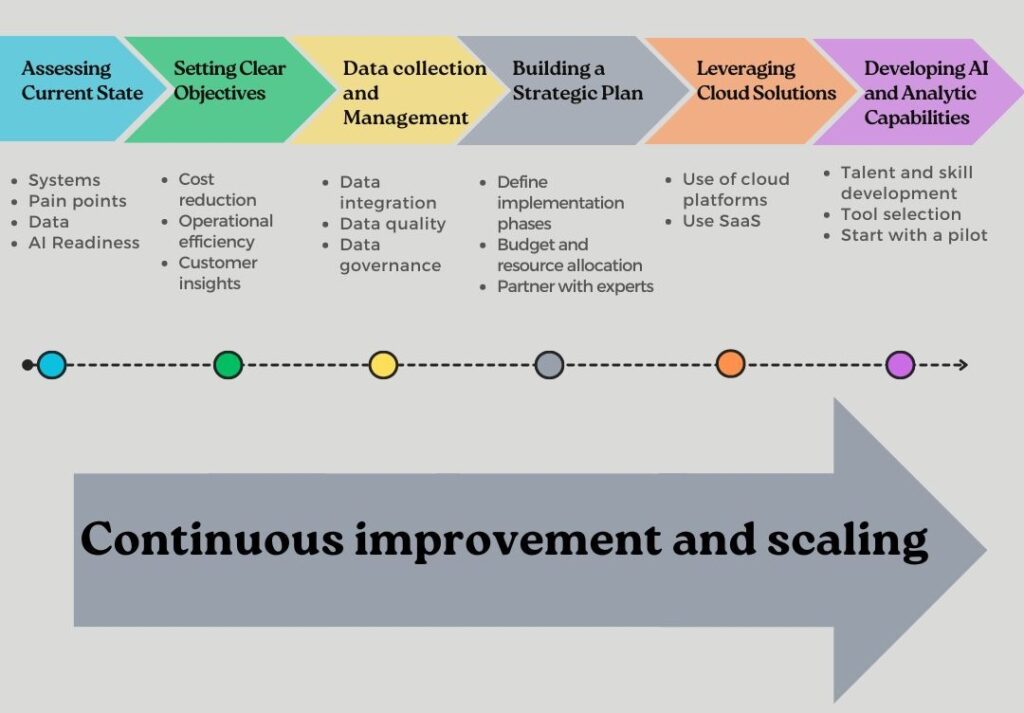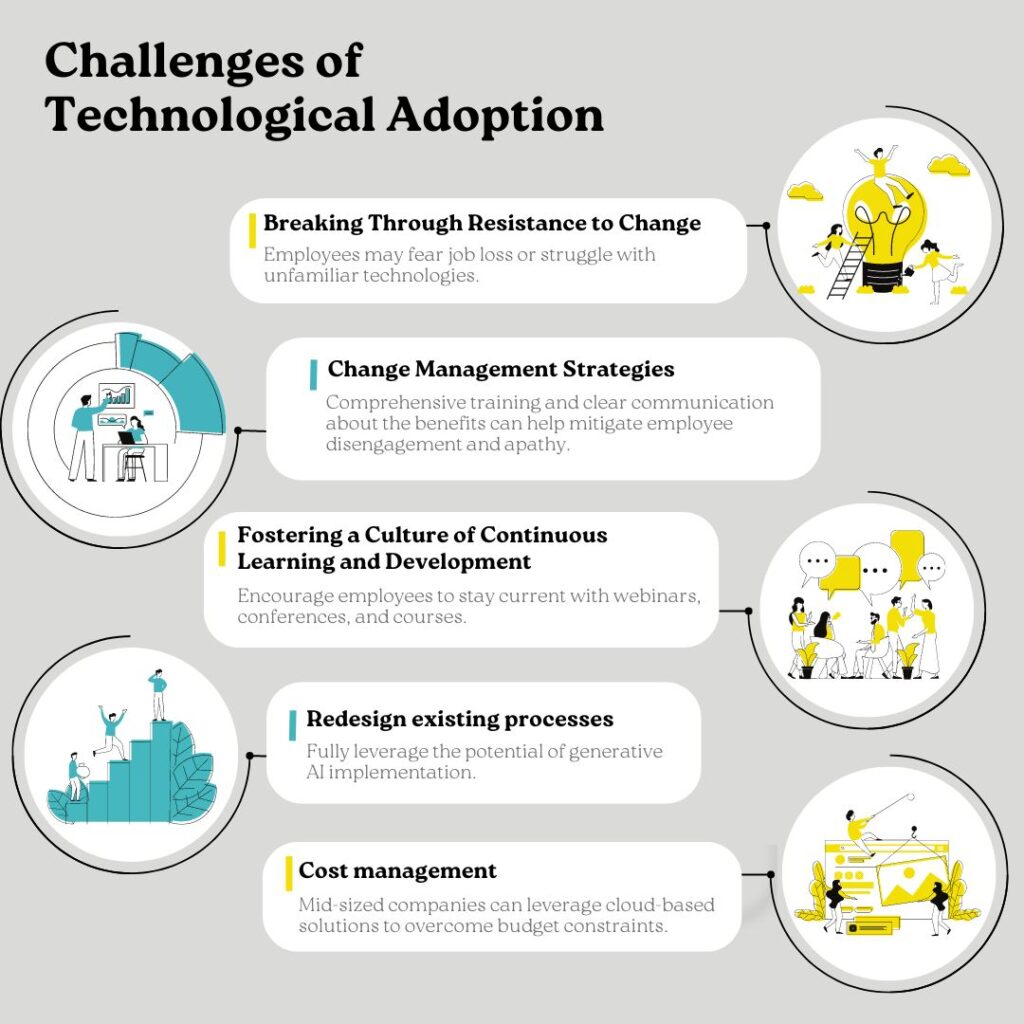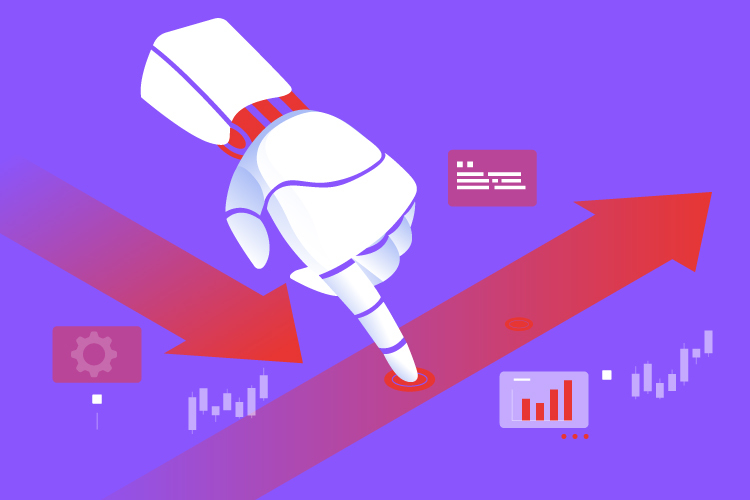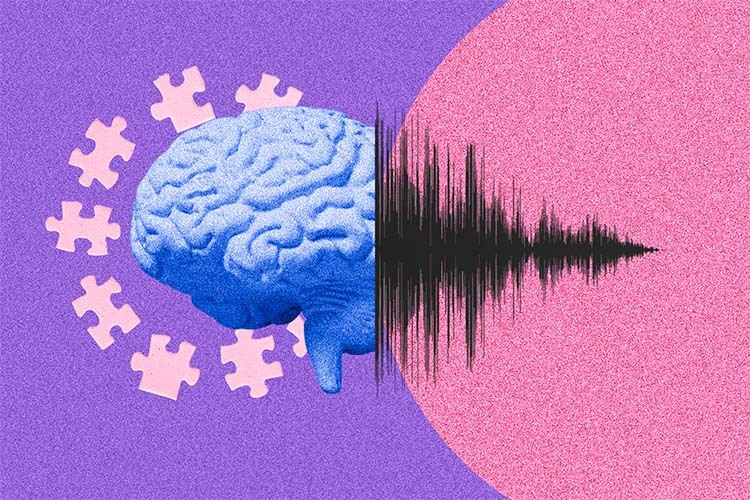By Manuela Breustedt y María Lucila Osorio
The business world is undergoing a seismic shift, driven by the rise of artificial intelligence (AI) and data analytics as pivotal tools for enhancing competitiveness and efficiency.
Medium-sized manufacturing companies, often grappling with limited resources and infrastructure, face an urgent need to harness these technologies or risk obsolescence. Beyond mere process improvements, AI has the power to revolutionize organizational culture and transform business operations fundamentally (Davenport, 2024).
The core of digital transformation is to become a data-driven organization where decisions and actions are based on data (Chamorro-Premuzic, 2021).
How AI Gives Businesses the Edge
AI supports various business needs, primarily through process automation, which reduces repetitive administrative tasks and frees up resources for analytical work.
Additionally, AI uses machine learning to analyze large data sets, detect patterns, and provide insights. It also enhances engagement with customers and employees through virtual assistants and chatbots (Davenport, 2024b).
More recently developed, generative AI (genAI) allows the creation of new content through pretrained transformers and deep learning. It’s a technology that can classify, edit, and summarize information, making it useful for automating administrative processes. (Chui, 2023).
Challenges of Digitalization
Most organizations are still in the early stages of analyzing and implementing genAI, but an increasing number are working on establishing a data and analytics culture to become data-driven.
Actually, AI can significantly accelerate this process and make digital transformation achievable if organizations can overcome the challenges of governing generative AI—specifically, the ethical, legal, technical, and security issues that must be addressed during its implementation (Davenport, 2024).
However, many organizations fail to invest in the right talent and skills and lack a clear definition and vision for their digital transformation.
Only 9% of manufacturing organizations have implemented AI strategies and applications (Brown, 2024). Despite the consensus among executives that AI could increase efficiency, resilience, and profitability by enhancing customer satisfaction and eliminating repetitive tasks, many companies struggle to develop a strategic plan for AI readiness (Holmström, 2022).
How to Navigate the Complexities of AI
We propose the following framework to guide mid-sized companies through their digital transformation.

1. Assessing the current state
The process begins by creating an inventory of existing systems, infrastructure, and software, while also identifying pain points such as inefficiencies or areas with high operational costs. A ‘data audit’ should then be conducted to assess the availability and quality of data generated within the organization.
An AI readiness assessment can also be performed if needed, reviewing how changes in digital technologies affect activities, boundaries, and goals. This dual assessment of the ‘present state’ and ‘desired future state’ helps identify gaps to be closed (Holstroem, 2022).
2. Setting clear goals
Based on the results of the assessment, organizations can set clear objectives tailored to their needs, including cost reduction in specific areas, enhancing operational efficiency by streamlining processes, reducing waste, improving decision-making, or leveraging data to gain customer insights.
This clear goal-setting reduces the risk of demotivation and disappointment, ensuring that the organization remains on track and motivated throughout the digital transformation journey.
3. Data collection and management
Establishing robust data collection and management practices, including integration, quality control, and governance, is essential. Consolidate all data into a single repository and maintain high standards through master data management and regular data cleaning.
These best practices ensure that, when resources allow, implementing technology to track warehouse movements, delivery times, and restocking can significantly improve data quality by reducing human errors.
4. Building a strategic plan
Based on the first steps, a strategic plan should be developed by creating a roadmap that outlines each phase of implementation. This roadmap should break down the process into manageable phases to ensure gradual integration and adjustment, avoiding the pitfalls of overly ambitious plans which can overwhelm the company and lead to project drift.
Allocating sufficient budget and resources is critical. This includes planning for personnel training and technology acquisition in advance to ensure the success of the implementation.
5. Leveraging cloud solutions
Integrating cloud platforms for data storage and AI processing presents a cost-effective solution. By deploying Software as a Service (SaaS) solutions for data analytics or process automation, companies can access advanced tools and capabilities that would otherwise require significant capital expenditures.
These solutions often include robust analytics features, machine learning capabilities, and seamless integration with other business systems (Fiedler et al., 2022). To mitigate concerns about data security and compliance, the organization should choose reputable cloud service providers with strong security measures (Madnick, 2024).
6. Developing AI and data analytics capabilities
Developing the necessary skills among current employees through comprehensive training programs is crucial. By upskilling the existing workforce, the organization can tap into its internal talent to drive digital transformation.
Recruiting new employees with expertise in AI and data analytics is also essential to fill any skill gaps. To reduce recruitment and training costs, the company can explore partnerships with educational institutions, providing access to a pool of qualified candidates and tailored training programs. Starting with small teams as a pilot project can be an effective way to test AI applications on a smaller scale before broader implementation..
Continuous improvement and scaling
After the initial AI and data analytics implementations prove successful, organizations should shift their focus to continuous improvement and scaling. It’s also crucial to monitor the performance of AI and analytics systems regularly, identifying areas for refinement and adjustment.
The expansion to other business areas should take place gradually. Starting with the most critical areas ensures that scaling does not overwhelm the organization’s capabilities or lead to operational disruptions and has the most significant impact on business performance.
Feedback from stakeholders, including employees, customers, and partners allows for the enhancement of AI and analytics applications based on practical experiences.

References
- Brown, R. (2024, May 22). PwC: Here’s how Manufacturers can Effectively Implement AI. Manufacturing Digital.
- Chamorro-Premuzic, T. (2021, December 2). The essential components of digital transformation. Harvard Business Review.
- Chui, M., Roberts, R., Rodchenko, T., Singla, A., Sukharevsky, A., Yee, L., & Zurkiya, D. (2023, May 12). What every CEO should know about generative AI. McKinsey & Company.
- Davenport, T.H. (2024, January 16). Survey: GenAI is making companies more data oriented. Harvard Business Review.
- Davenport, T.H. (2024b, February 22). 3 things AI can already do for your company. Harvard Business Review.
- Holmström, J. (2022). From AI to digital transformation: The AI readiness framework. Business Horizons, 65(3), 329–339.
- Fiedler, M., Kühn, C., Poggensee, K., & Soller, H. (2022, October 5). How medium-size manufacturers can boost their digital capabilities. McKinsey & Company.
- Madnick, S. (2024, February). Why Data Breaches Spiked in 2023. Harvard Business Review.
.
Authors
Manuela Breustedt. MBA student at EGADE Business School. She is a seasoned professional with over 15 years of diverse experience in a medium-sized German company based in Mexico.
María Lucila Osorio. Research professor at EGADE Business School and leads Retail Industry Transformation Research Group at Tecnologico de Monterrey’s Business School.
.















